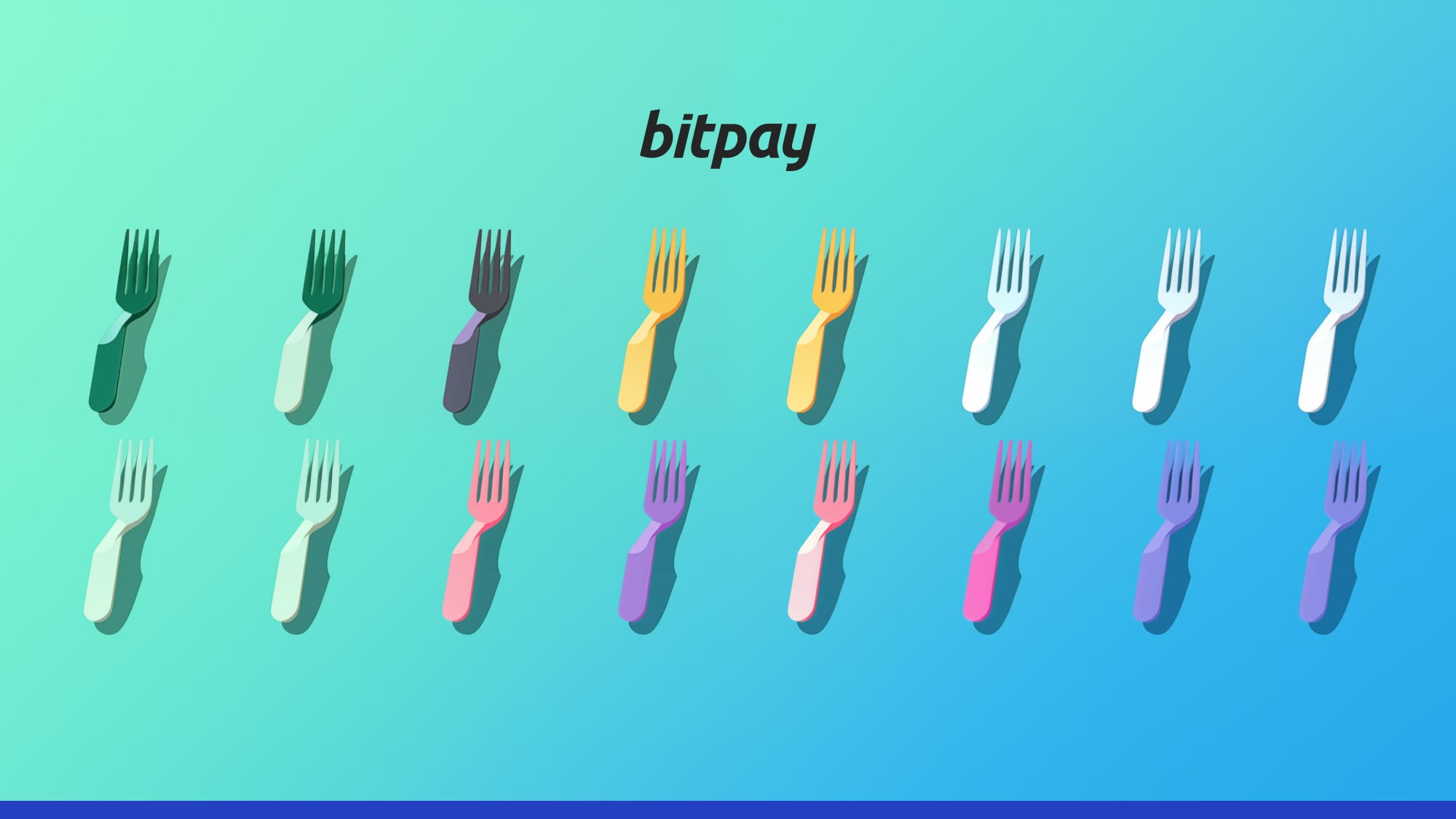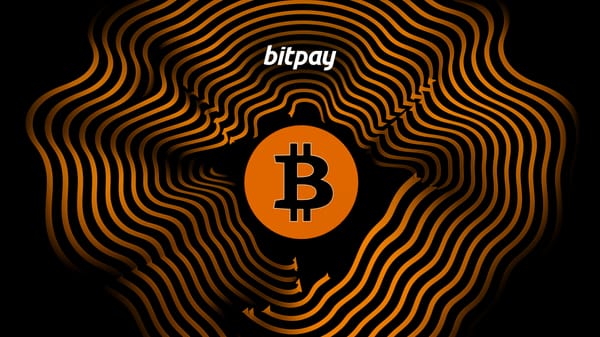Transactions recorded on a blockchain are permanent, but the underlying rules that keep the networks running are a different story. Sometimes, for various reasons, network users initiate a change of these fundamental rules, resulting in a fork. There are different kinds of forks, with varying levels of severity and which have different implications for blockchain networks and their users. Two of the most popular blockchains, Bitcoin and Ethereum, have undergone forks in the past.
Cryptocurrencies like Bitcoin and Ethereum are powered by a decentralized form of open-source software called a blockchain. Because of the open-source nature of blockchains, developers or community members sometimes make changes that alter how their underlying software protocols function in a process known as forking. There are different types of forks, and they occur for various reasons. Some are significant changes, others are more minor. Ahead, we’ll unpack the most important things to know about blockchain forks, explain how they work and offer some examples of real life forks.
The concept of forks in blockchain explained
The term “fork” in crypto parlance is borrowed from software engineering. In that context, a fork is when developers take an existing piece of source code to use as the basis for a new, separate piece of software that’s distinct from the original.
A blockchain fork occurs when its community makes a change that alters how the protocol works in some way. When this happens, a second blockchain splits off from the original, similar to the tines of the kind of fork you eat with. The forked blockchain shares an identical history with the original “prong”, but goes its own way from the moment the split occurs. Some forks eventually rejoin the original blockchain down the line, others remain permanently separated.
Blockchains are maintained and secured by network participants (or “nodes”) who adhere to a shared set of rules known as a protocol. Blockchain protocols govern how a network operates, including everything from the size of each block to how much miners are paid for each new transaction block they mine. A blockchain’s functionality is dependent on these nodes agreeing on the protocols and acting in accordance with the rules, which is called consensus. However, sometimes nodes disagree about the direction a cryptocurrency is taking and initiate a change, which causes a blockchain to split. Forks also happen for less contentious reasons, such as adding a new feature or function, or to address a security issue.
Types of blockchain forks
There are two types of blockchain forks, “soft” forks and “hard” forks, the main difference being the scale of changes made to the blockchain protocol.
Hard forks occur when a blockchain’s underlying code undergoes such a significant change that the newer version is incompatible with previous blocks. This is when a blockchain is split, creating a fork of the original that follows the modified set of rules while the original carries on with the established protocols. When this happens, it creates an entirely new cryptocurrency. Some hard forks have resulted in the creation of popular cryptocurrencies with robust ecosystems and massive communities, such as Bitcoin Cash (BCH) and Litecoin (LTC). Due to the splitting, hard forks are considered much riskier than soft forks, and can make networks less secure and more vulnerable to theft by hackers or other malicious actors.
Soft forks are more like a software upgrade than a major change that causes a blockchain to split. Soft forks are typically initiated by a blockchain’s community members to add a new function or feature, usually at the programming level. Since a soft fork doesn’t cause a new blockchain to split off from the original, as long as a majority of nodes agree with the new rules, they can be implemented onto the existing blockchain and remain backwards compatible with previous transactions. A well-known example of a soft fork is the Segregated Witness (SegWit) upgrade of the Bitcoin blockchain, which improved the capacity of the network by allowing more transactions per block.
Main differences between hard and soft forks
Hard forks happen when changes made to a blockchain’s protocols are so significant that they create a separate blockchain, and sometimes an entirely new cryptocurrency. When a hard fork occurs, network validators are required to update to the most recent version of the protocol, and transactions on the newly split blockchain will not be backwards compatible with the original. When a hard fork occurs, holders of the previous chain’s tokens receive tokens on the new chain.
Soft forks are much less disruptive, only requiring a strong majority of nodes to support the proposed changes before they can be seamlessly integrated into the existing blockchain. Soft forks do not cause a blockchain to split, nor do they result in the creation of a new cryptocurrency.
A common way of describing the difference between a soft and hard fork is to think of it like a computer or mobile device operating system. A soft fork is akin to getting a new version of the operating system, where all programs remain compatible. A hard fork, on the other hand, is like transitioning to an entirely new operating system where your old programs are now incompatible.
Notable real-life examples of blcokchain forks
There have been a number of prominent hard and soft forks over the lifespan of cryptocurrencies and blockchain networks. Next, we’ll take a look at some of these and discuss their implications to the world of digital assets.
Segregated Witness (SegWit)
Type of fork: Soft
Blockchain affected: Bitcoin
Date of fork: August 23, 2017
Segregated Witness, or SegWit, was a soft fork upgrade to the Bitcoin protocol initiated in August 2017. SegWit allowed more transactions to be included in each block by decoupling transaction data from their digital signature, which allowed the change to take place without actually increasing the block limit size. The net effect was increasing the capacity of the network, which boosted transaction speed and reduced fees for users.
SegWit2x and Bitcoin Cash
Type of fork: Hard
Blockchain affected: Bitcoin
Date of fork: August 1, 2017
At the time of SegWit’s implementation, a group of Bitcoin network participants wanted to increase the transaction block limit size, believing that was more in line with Satoshi Nakamoto’s original vision. As a result, the Bitcoin blockchain was forked, which led to the creation of the Bitcoin Cash blockchain and cryptocurrency. Initially the BCH block size was 8 MB (compared to 1mb on the original Bitcoin blockchain), but it has since grown to 32 MB.
Ethereum Classic and 2016 DAO Hack
Type of fork: Hard
Blockchain affected: Ethereum
Date of fork: July 2016
One of the most controversial forks in the history of blockchain was set in motion by the 2016 decentralized autonomous organization (DAO) hack on Ethereum. The DAO raised over $150 million worth of ETH in a token sale, but hackers took advantage of a vulnerability in its codebase and managed to steal $60 million worth of ETH from thousands of investors. At the time, the stolen funds represented nearly 14% of all Ether in circulation. Ethereum founder Vitalik Buterin initially suggested a soft fork that would have blacklisted the hacker’s wallet address and rendered the ill-gotten funds unmoveable. However, someone claiming to be the hacker said they would bribe ETH miners to prevent the soft fork from taking place. Ultimately a hard fork was executed that essentially rolled back the Ethereum network’s transaction history to before the funds were stolen. The stolen funds were then diverted into a smart contract so the 11,000 investors who lost funds could be made whole. The hard fork was highly contentious, and rejected by some Ethereum users who threw their support behind the original, non-rolled-back version of the network, which is now known as Ethereum Classic (ETC).
Wrap up on blockchains
Blockchain forks are fairly uncommon, and aren’t always the result of a disagreement among network users. Many are even actively encouraged by a blockchain’s community members because they address a fundamental flaw or weakness in the network. The results of a fork, particularly a hard fork, can be unpredictable. The rules that govern blockchain networks are not easily changed, which is part of the reason any forking event is significant. In order for a fork to take place, one of two things has to happen. Either the vast majority of the network’s nodes must agree it’s needed, or a group of users so strongly opposes the way a cryptocurrency operates that they strike out on their own.


